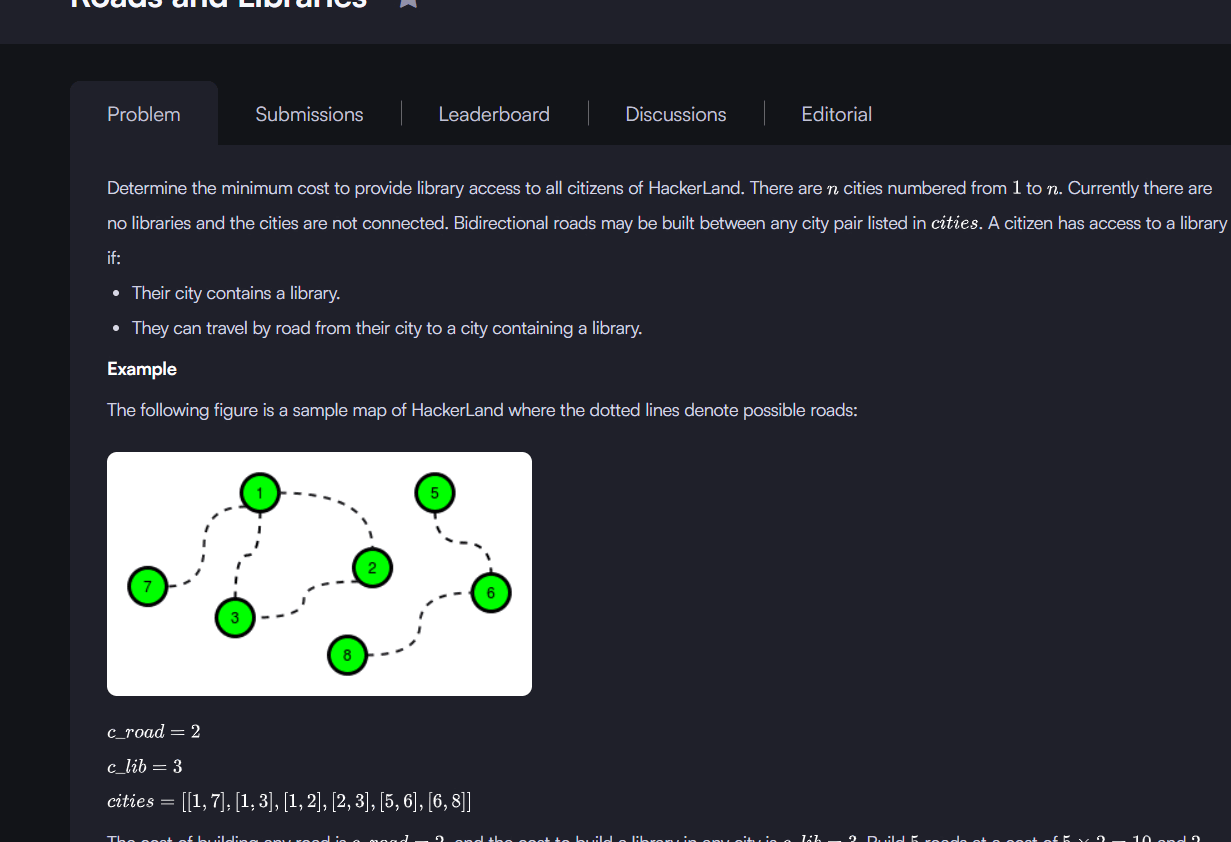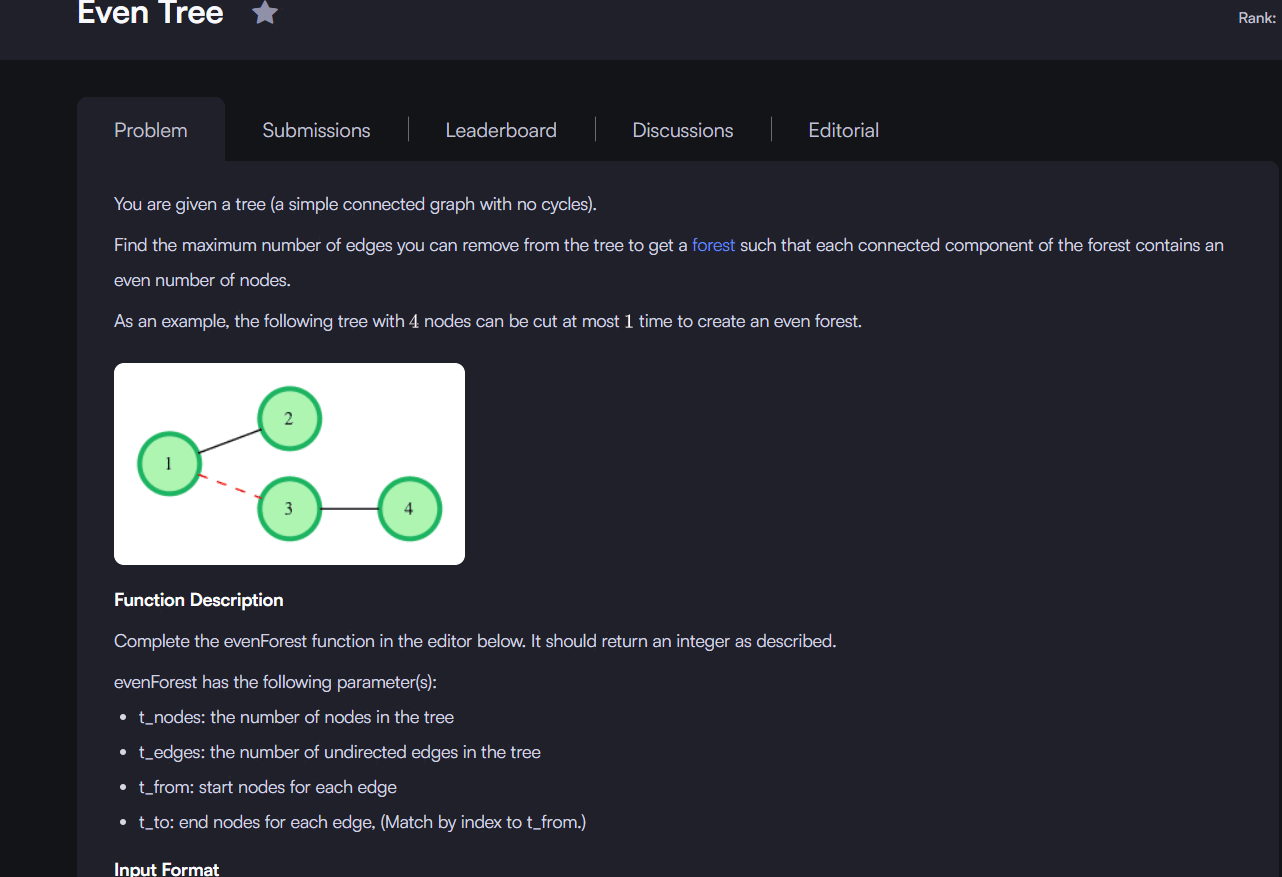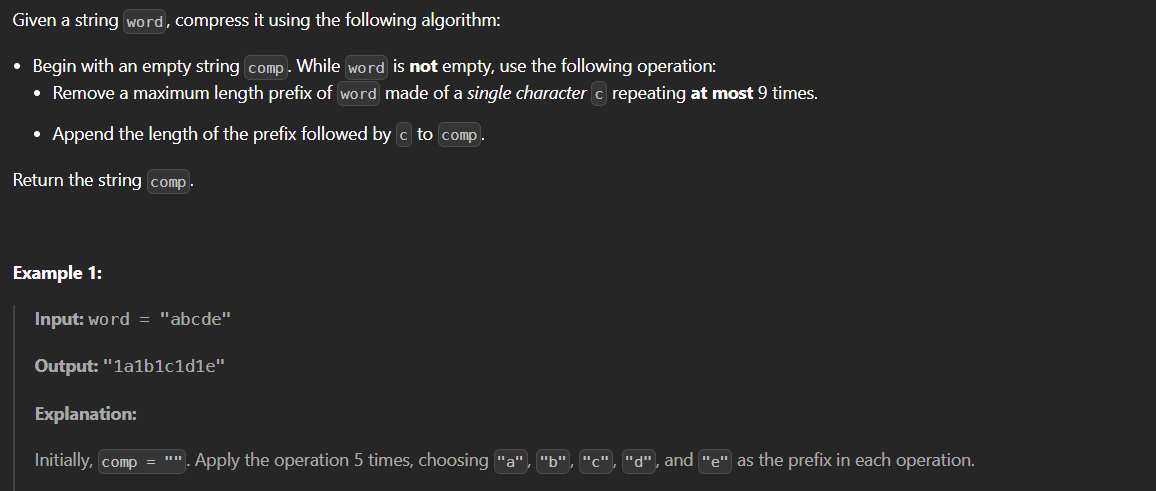Introduction
As someone who’s been exploring modern development trends, I’ve realized that picking the right programming language can make a big difference—not just in how fast you build, but how far your career can go. In a tech landscape that keeps evolving, new languages come and go, each promising to be the future. But one language that consistently delivers and continues to prove its worth in 2025 is Go—also known as Golang.
Go was created at Google back in 2007 (released publicly in 2009), and what really stands out to me is how it focuses on simplicity, speed, and scalability right from the start. It avoids the complexity that often comes with other systems-level languages, while still being incredibly powerful under the hood.
From what I see in 2025, Go is more relevant than ever. As cloud-native development, containers, and distributed systems dominate the software world, Go is at the core of a lot of that infrastructure. It powers tools like Docker and Kubernetes and is widely used by companies like Google, Uber, and Dropbox to build high-performance backend services. Personally, I’ve noticed that many backend and DevOps job listings now list Go as either a primary or preferred language.
So, why do I recommend Go for beginners in 2025?
Because it strikes that rare balance between being beginner-friendly and production-ready. If you’re just getting into programming, Go’s clean syntax and straightforward structure won’t overwhelm you. But as you grow, you’ll discover that Go has depth—especially when it comes to concurrency, networking, and performance-critical tasks.
When I first came across Go, I was a bit skeptical. But the more I worked with it—especially on backend tools and lightweight APIs—the more I appreciated how efficient and productive it made me feel. The build times are lightning-fast, the tooling is excellent, and you get to focus on writing logic instead of managing layers of abstraction.
Whether you’re looking to boost your skills, break into backend or cloud engineering, or just want to learn a language that’s actually fun and practical, Go is absolutely worth your time. The job market is growing, the community is active, and it’s a skill you can genuinely apply to real-world projects.
In this post, I’ll walk you through what makes Go such a strong language in 2025, highlight some of its key features, and help you take the first step if you’re ready to dive in.
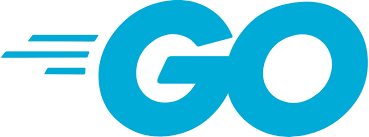
What Is Go and Who Created It?
Go (or Golang) is a statically typed, compiled language developed by Rob Pike, Ken Thompson, and Robert Griesemer at Google. It was first announced in 2007 and officially released to the public in 2009. From what I’ve learned, the team behind Go was driven by a real frustration with existing tools—languages like C++ felt too complex and slow to compile, while dynamically typed languages like Python didn’t offer the kind of performance needed for large-scale systems.
The goal was to build something that could support modern computing needs—think distributed systems, microservices, and cloud-native infrastructure—without the baggage of unnecessary complexity. And honestly, they nailed it.
What I really appreciate about Go is its simplicity. The syntax is incredibly clean and minimal, making it beginner-friendly but still powerful enough for professional-grade applications. It strikes a nice balance: you get things like garbage collection, memory safety, and built-in concurrency without having to jump through hoops or learn overly abstract concepts.
From the beginning, Go was designed to help developers build fast, scalable, and efficient software that could integrate smoothly into real-world workflows. It draws inspiration from languages like C, C++, and Python, but brings in modern features that make everyday development a lot more productive.
Today, Go is widely used by big names like Google, Dropbox, Uber, and Docker—especially in the world of cloud computing and backend systems. Its performance, clear structure, and concurrency model have made it a top choice for developers working on serious, production-level systems.
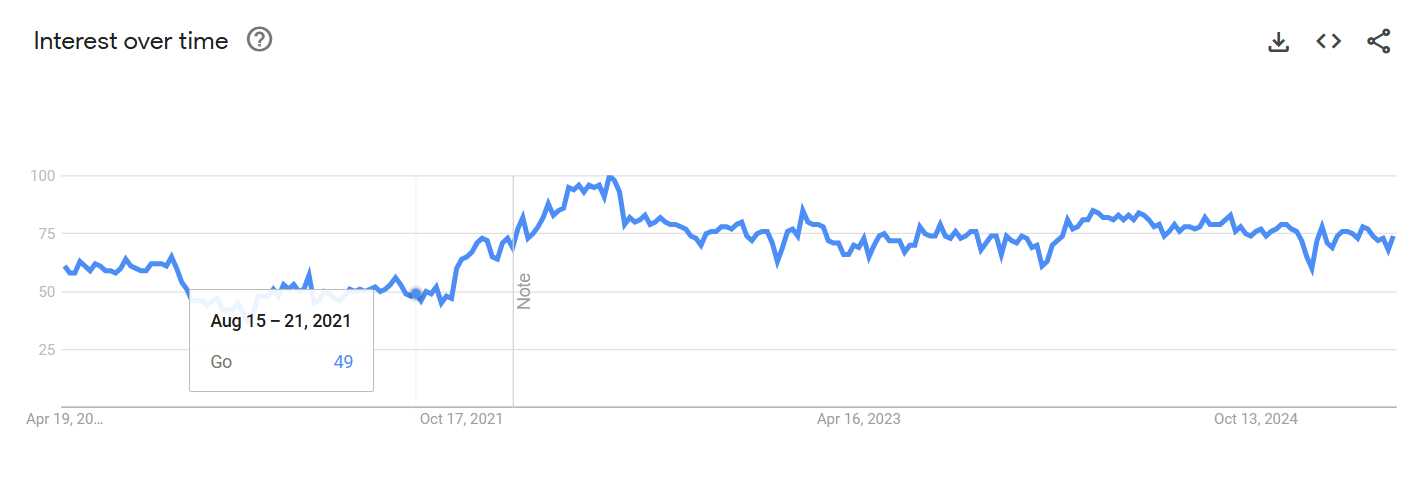
Go's Core Features: Simplicity and Efficiency
What really sets Go apart for me is its focus on simplicity and efficiency. It’s rare to find a language that’s both easy to learn and powerful enough to build production-grade systems—but Go strikes that balance really well. Whether you’re just starting out or working on complex backend architecture, Go manages to keep things clean without compromising on performance.
1. Simple Syntax
One of the first things I noticed about Go is how clean and minimal the syntax is. It avoids the kind of clutter you see in other languages—no unnecessary keywords, no heavy object-oriented overhead like inheritance, and no tricky rules around memory management.
I personally like that you can read and understand Go code pretty quickly, even without a ton of prior experience. You don’t need to memorize a dozen concepts before writing your first real program. It also skips things like mandatory semicolons at the end of lines and keeps block structures intuitive. This makes it super beginner-friendly and keeps codebases more readable over time.
2. Efficient Performance
Despite how simple it looks, Go is fast. Since it’s a compiled language, it runs directly as machine code—giving it performance that’s comparable to C or C++. That’s impressive for a language that’s this easy to write.
What I really appreciate here is that Go doesn’t sacrifice speed for simplicity. Its garbage collector takes care of memory without being a performance bottleneck, and it just feels snappy—even for larger apps. You get a lot of the performance benefits of lower-level languages without the complexity they usually bring.
3. Built-in Concurrency
One of the biggest reasons I recommend Go—especially for backend and systems development—is its built-in concurrency model. Go makes it ridiculously easy to run multiple tasks at the same time using goroutines. You don’t have to manage threads manually or dive into complex concurrency libraries.
Goroutines are lightweight, almost like supercharged functions, and they’re easy to launch with just a simple keyword. Add in channels, which let your goroutines talk to each other safely, and you’ve got a system that makes writing scalable, concurrent applications way easier than in most languages.
This is a huge win if you're working on web servers, networked apps, or any system that needs to handle lots of things at once.
4. Cross-Platform Compatibility
Another big plus for me is Go’s cross-platform support. Whether you’re building on Windows, macOS, or Linux, Go lets you write your code once and compile it anywhere. That kind of flexibility saves time and effort—especially when you’re targeting multiple environments or building tools for a team.
You don’t have to worry about platform-specific tweaks or weird compatibility issues. Go makes it easy to build consistent, reliable tools that run the same way across different systems.
Minimal Syntax Comparison Table: Go vs Python vs Java vs C++:
| Concept | Go | Python | Java | C++ |
|---|---|---|---|---|
| Define a struct/class | type Person struct {Name string} |
class Person:def __init__(self, name):self.name = name |
public class Person {String name;} |
class Person {public:std::string name;}; |
| Add method | func (p Person) Greet() {fmt.Println("Hello", p.Name)} |
def greet(self):print("Hello", self.name) |
public void greet() {System.out.println("Hello " + name);} |
void greet() {std::cout << "Hello " << name;} |
| Call the method | p := Person{"Alice"}p.Greet() |
p = Person("Alice")p.greet() |
Person p = new Person();p.name = "Alice";p.greet(); |
Person p;p.name = "Alice";p.greet(); |
Concurrency in Go: Go Routines and Channels
One of the things I really like about Go is how it handles concurrency. In today’s software landscape, being able to manage multiple tasks at once is essential—whether you're building a web server, working on a distributed system, or creating anything that needs to handle lots of users or processes simultaneously.
What makes Go stand out here is that it doesn’t use traditional threads like other languages. Instead, it introduces a much more elegant and lightweight solution with goroutines and channels. Once you get the hang of it, writing concurrent programs in Go actually feels simple—something that can’t be said for most languages.
1. Goroutines: Lightweight Threads
Goroutines are Go’s version of threads, but they’re far lighter and easier to work with. In languages like Java or C++, spinning up a thread usually comes with overhead and manual synchronization headaches. But in Go, goroutines are designed to be so lightweight that you can run thousands of them without hammering your system.
Starting a goroutine is ridiculously easy—just add the go keyword before a function call:
go myFunction()
That’s it. This runs myFunction() concurrently, and Go’s runtime handles the scheduling for you. No need to deal with thread pools or locks. This is one of the reasons I think Go is such a great tool for building scalable backend systems.
2. Channels: Safe Communication Between Goroutines
Now, concurrency isn’t just about running tasks in parallel—you also need a safe way for them to communicate. That’s where channels come in.
Channels are Go’s built-in way to send and receive data between goroutines. Think of them as pipes: one goroutine pushes data in, another reads it out. This approach ensures everything stays synchronized and thread-safe, without needing complicated lock mechanisms or shared memory.
Here’s a simple example of using channels to pass data between goroutines:
package main
import "fmt"
func main() {
messages := make(chan string)
go func() {
messages <- "Hello, Go!"
}()
msg := <-messages
fmt.Println(msg)
}
In this code, a goroutine sends "Hello, Go!" into the messages channel, and the main function receives and prints it. It's simple, clean, and effective. You don’t need to worry about race conditions or deadlocks—Go’s concurrency model handles that for you.
3. Benefits of Go’s Concurrency Model
What really wins me over is how natural Go’s concurrency model feels. You don’t have to battle with threads, semaphores, or mutexes just to run things in parallel. Goroutines and channels just make sense once you use them.
And performance-wise, Go handles concurrent workloads incredibly well. Whether it's a high-load web API or a background task processor, it scales easily and doesn't choke on thousands of concurrent tasks.
In short, if your project needs high concurrency—think network servers, real-time apps, or cloud-based tools—Go’s model is not just easier to work with, it’s also incredibly efficient. It's one of the main reasons I keep coming back to Go for backend development.
Why Go Is Perfect for Cloud-Native Applications
As software continues to shift toward cloud-native architectures and microservices, one language I see consistently standing out is Go. It's not just hype—Go genuinely fits the modern cloud-native stack. With its speed, simplicity, and built-in concurrency, Go makes it easy to build high-performance, scalable, and maintainable cloud-native systems.
1. Fast and Lightweight
One of the biggest reasons Go works so well for cloud-native applications is its speed and light footprint. Since Go is a compiled language, it translates directly into machine code, giving it the performance of lower-level languages like C or C++, but without all the complexity.
In the cloud, efficiency matters. You're often billed based on resource usage—CPU, memory, storage, etc.—so small, fast binaries make a real difference. Go’s small executable size and quick execution mean your services can handle high loads with minimal overhead. That translates into both better performance and lower costs.
2. Built-in Concurrency with Goroutines
Cloud-native apps are all about handling parallel workloads—whether it's user requests, background jobs, or API calls. Go nails this with goroutines, which are lightweight threads managed by the Go runtime.
What’s great is that launching a goroutine is as easy as typing go myFunction(). Behind the scenes, Go handles all the scheduling. You don’t have to deal with threads, pools, or complex synchronization. This makes Go a fantastic choice for building microservices, especially when each service needs to juggle multiple operations at once—like querying databases, calling APIs, or processing data in parallel.
3. Built for Scalability
From the ground up, Go was built to scale. Whether you’re working on a small service or a system distributed across data centers, Go makes it easy to scale horizontally. Its concurrency model lets you take full advantage of multi-core processors without extra configuration.
And because it works so well in containerized environments, Go fits seamlessly into Docker and Kubernetes. You can spin up Go-based microservices quickly, scale them up or down depending on traffic, and keep everything lightweight and responsive. That kind of elasticity is essential in today’s cloud-native systems.
4. Cross-Platform Support
Cloud-native services need to be portable. Whether you’re deploying on AWS, Google Cloud, Azure, or a private server, Go lets you compile your app for almost any OS or architecture with just a flag.
You write your code once, and Go can compile it to run on Linux, macOS, or Windows—no special tweaks needed. That makes things easier when you’re dealing with CI/CD pipelines, multi-platform builds, or hybrid cloud deployments.
5. Robust Ecosystem and Cloud-Native Tools
Go has really become the go-to language (pun intended) for cloud-native tooling. It's the language behind Kubernetes, Docker, Prometheus, Helm, and more. These tools aren’t just part of the ecosystem—they define it.
That means when you're working in Go, you're speaking the same language as the tools you're deploying with. Plus, Go has excellent support for gRPC, REST APIs, and even direct Kubernetes API integration, making it a great choice for building services that need to talk to other cloud components smoothly.
6. Easy Integration with Cloud Providers
Another reason I like using Go in cloud environments is how easily it integrates with major cloud services. Most providers—including AWS, GCP, and Azure—offer first-party Go SDKs, so you can work directly with things like S3, DynamoDB, Pub/Sub, or Lambda functions.
The AWS SDK for Go, for example, is solid and well-documented. Whether you're interacting with cloud storage, setting up queues, or managing infrastructure-as-code, Go makes it straightforward. You’re not stuck wrestling with compatibility layers or missing features.
Go's Speed: Why It Outperforms Other Languages
When developers look for a programming language that offers blazing-fast performance without the usual complexity, Go (Golang) consistently comes out on top. In 2025, speed isn’t just a bonus—it’s a necessity for delivering seamless user experiences, handling large-scale traffic, and keeping cloud costs under control. Go's design philosophy gives it a serious performance edge over other modern languages.
1. Compiled for Speed
Go is a statically typed, compiled language. Unlike interpreted languages like Python or runtime-dependent ones like JavaScript, Go compiles directly into machine code. This means:
- No virtual machine (VM) to slow things down.
- No interpreter layer to execute code line-by-line.
- Just pure native execution.
As a result, Go apps launch fast, execute faster, and scale effortlessly in high-traffic environments. This makes it ideal for use cases like API servers, CLI tools, and edge computing, where speed is non-negotiable.
2. Efficient Concurrency with Goroutines
While other languages often rely on heavy threads for concurrency, Go uses goroutines—lightweight units of execution managed by the Go runtime. You can spawn thousands of goroutines, where you might only manage a handful of threads in languages like Java or C++.
This means:
- Faster handling of simultaneous tasks.
- Lower memory consumption.
- Better throughput under pressure.
It’s a big reason why Go outperforms others in building real-time applications, chat servers, web scrapers, and network proxies.
3. Superior Memory Management
Languages like Python and Ruby offer developer-friendly syntax but often come at the cost of memory inefficiency. Go, on the other hand, offers:
- Automatic garbage collection, optimized for low pause times.
- Memory pooling, reducing allocations.
- Low-level access (e.g., pointers) when needed, without the danger of manual memory management in C/C++.
These features let Go strike the perfect balance between performance and safety.
4. Minimal Runtime Overhead
Go doesn't need bloated frameworks or runtime environments. The Go standard library is fast, lean, and efficient. Programs written in Go:
- Start almost instantly.
- Have predictable performance.
- Come with everything needed compiled into a single binary.
Contrast that with Node.js (which depends on the V8 engine and npm packages) or Python (which often needs external libraries just for performance tuning).
5. Optimized for Multi-Core CPUs
Modern machines and servers rely heavily on multi-core processors. Go is built to take advantage of that:
- Its scheduler maps goroutines to available CPU cores.
- Developers don’t need to manually manage threads.
- The result: smoother parallelism and superior performance out-of-the-box.
6. Real-World Benchmarks
Go routinely beats other languages in industry benchmarks:
- HTTP servers in Go handle more requests per second than those built in Node.js or Python.
- Concurrent applications scale better with lower latency.
- Binary size and startup time are smaller and faster compared to Java, .NET, and even Rust in many CLI use cases.
These performance wins have made Go the backbone of high-performance tools like Docker, Kubernetes, etcd, and Traefik—all of which need to be fast, lightweight, and resilient.
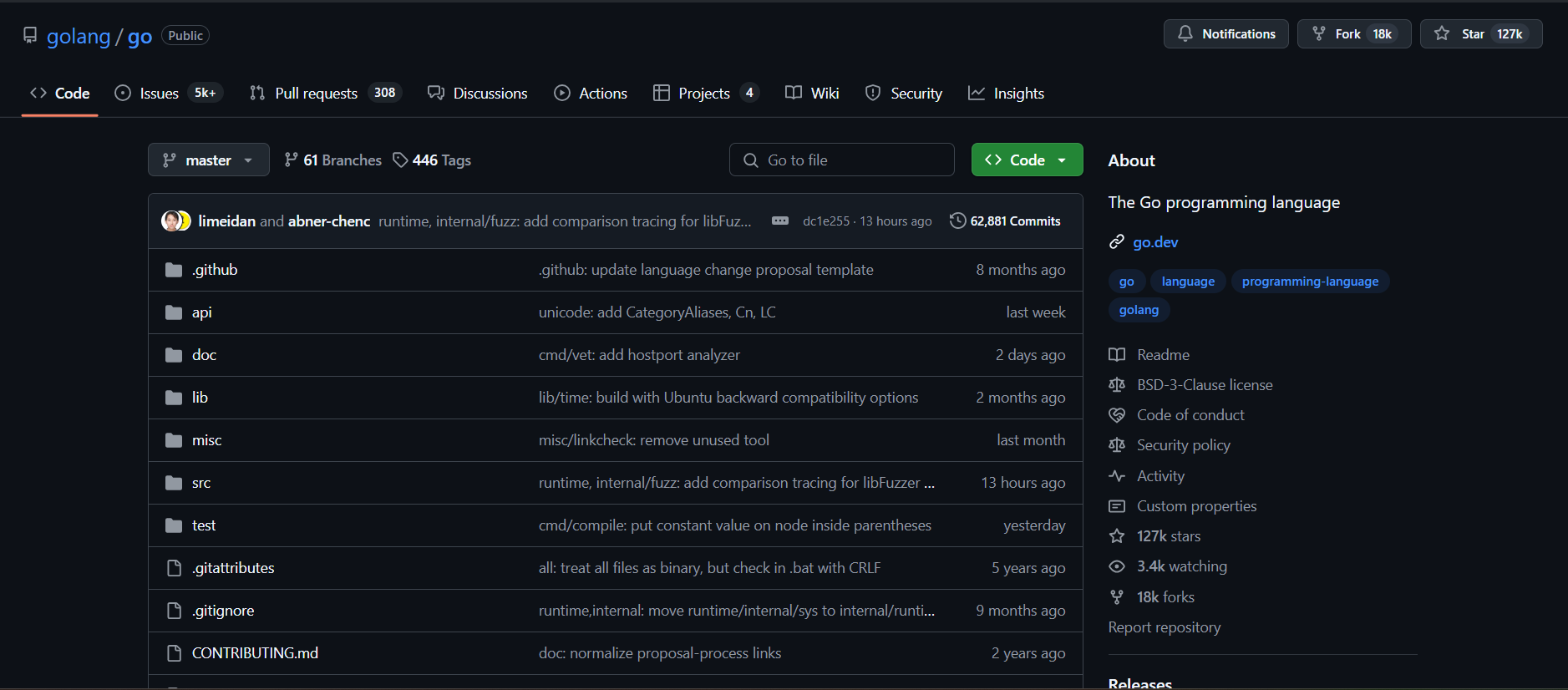
Go's Ecosystem and Libraries: A Growing Community
One of the biggest reasons I keep recommending Go is its rapidly growing ecosystem and the vast number of libraries and tools available. Over the years, Go has firmly established itself as a go-to language for building scalable and high-performance systems. This success owes a lot to its passionate developer community and the rich resources they’ve created to make development faster and smoother.
1. Official Go Libraries and Tools
Right out of the box, Go offers a powerful standard library that covers most of what you’ll need. Whether it’s file handling, networking, or concurrency management, Go’s standard library is designed to reduce your dependency on third-party packages by providing well-tested, reliable tools.
Some of the key packages I use often include:
- net/http — perfect for building web servers and clients
- fmt — for formatted input/output operations
- os — to interact with the operating system, like reading files or environment variables
- encoding/json — for working with JSON data easily
Plus, Go includes a built-in testing framework that makes it simple to write and run unit tests. The go test command is straightforward but powerful, helping you ensure your code behaves as expected without extra setup.
2. Go Modules: Dependency Management
As Go has grown in popularity, the community has developed an advanced dependency management system known as Go modules. Introduced in Go 1.11, Go modules allow developers to manage external libraries and dependencies in a more structured and efficient way.
With Go modules, you no longer have to worry about the complexities of managing dependencies manually or dealing with issues like version conflicts. Go modules ensure that you’re always using the correct versions of libraries, making it easier to collaborate with other developers and maintain your projects.
A simple example of using Go modules:
go mod init myproject
go get github.com/some/library
3. Third-Party Libraries and Frameworks
While the standard library is robust, the Go community has built tons of excellent third-party libraries to cover even more ground—whether it’s web development, database interaction, or command-line tools.
Some favorites I’ve found useful:
- Gin — a fast, lightweight web framework ideal for REST APIs
- Gorm — a popular ORM for working with databases smoothly
- Docker Client — Go libraries that help interact with Docker, widely used in containerization and DevOps
- Cobra — great for building powerful command-line applications
Thanks to these libraries, Go can handle everything from backend services to systems programming and beyond.
4. Go's Growing Community
Go’s community is one of its most valuable assets. The language has seen significant growth over the past decade, and the community has helped to shape Go into what it is today. The Go community is incredibly active, with regular meetups, online forums, and resources where developers can share knowledge and best practices.
Platforms like GitHub, Stack Overflow, and Go's official forums host active discussions about best practices, libraries, and tools. Go also has extensive documentation and tutorials, which makes it easy for new developers to get up to speed quickly.
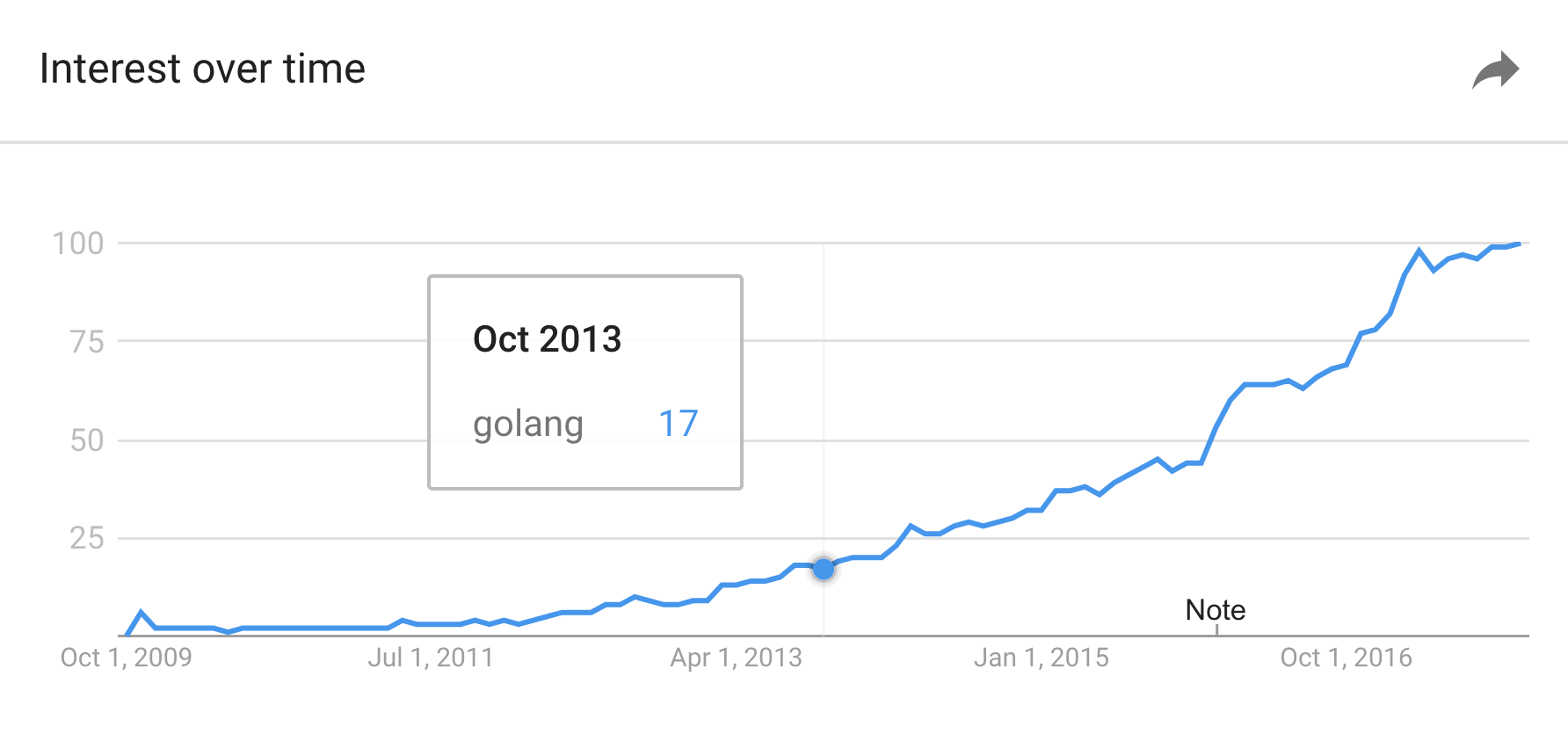
Why 2025 Is the Best Time to Learn Go
The tech landscape moves fast, but 2025 feels like a tipping point for Go (Golang). Although Go has steadily gained popularity since its launch, several trends coming together right now make this year the perfect moment to dive in. Whether you’re a beginner, a backend dev, or someone curious about modern infrastructure, Go has become an essential skill to boost your career and capabilities.
1. Go Is a Core Language for Cloud and DevOps
Cloud-native technologies are now mainstream—and Go is their native tongue. Some of the most important tools in cloud and DevOps are built in Go:
- Docker
- Kubernetes
- Terraform
- Prometheus
- etcd
As companies continue to migrate to microservices, containers, and orchestrated infrastructure, knowing Go gives you insider-level access to understanding, extending, and contributing to these tools. In 2025, hiring demand for developers who understand both Go and cloud architecture is skyrocketing.
2. The Job Market Is Expanding Rapidly
Go is no longer a niche language—it’s being actively adopted by top-tier tech companies:
- Google, the language's creator, uses it extensively.
- Netflix, Uber, Dropbox, and Twitch use Go in production for scalable backend systems.
- Startups choose Go for building APIs and microservices quickly.
Recruiters and companies are now explicitly listing Go as a required or preferred skill, especially in roles related to backend development, DevOps, and cloud engineering.
3. Maturity and Ecosystem Growth
In 2025, Go has a mature and battle-tested ecosystem. Key improvements in Go 1.22 and beyond have:
- Enhanced performance.
- Introduced new language features like type parameters (generics).
- Improved tooling (e.g.,
go mod,gopls, better error handling).
Unlike earlier years where Go lacked some advanced features, today’s Go combines simplicity with powerful abstraction, making it ideal for both small tools and complex distributed systems.
4. The Rise of Edge and Serverless Computing
As edge computing and serverless architectures become dominant, developers need languages that are:
- Fast to start
- Low on memory
- Cross-platform
Go’s small binary size, fast startup time, and strong concurrency support make it perfect for serverless functions, edge deployments, and IoT solutions.
5. Go Skills Lead to Open-Source Contributions
Go’s syntax is clean, readable, and widely used in open-source. With tools like Docker and Kubernetes being open-source powerhouses, learning Go in 2025 means you can:
- Read and understand source code of top-tier infrastructure projects.
- Contribute to critical tech used by millions.
- Join a thriving, collaborative developer community.
6. High Pay and Remote Opportunities
Go developers consistently rank among the highest-paid programmers globally. In 2025:
- Go salaries are rising due to scarcity of skilled developers.
- Remote Go jobs are increasing as companies modernize their stacks.
From backend APIs to cloud platforms, companies are looking for people who can build fast, stable, and concurrent systems—and they’re willing to pay a premium for Go expertise.
Learning Go: Where to Start and What Resources to Use
Getting started with Go (Golang) in 2025 is easier than ever. Thanks to a well-documented standard library, a strong developer community, and an ecosystem of quality tools, you can become productive with Go in a matter of weeks—even if you're coming from Python, Java, or JavaScript.
1. Official Go Documentation and Tour
Your first stop should be the official Go website:
- The Go Tour (https://tour.golang.org): An interactive tutorial that walks you through Go basics right in your browser. No installation needed.
- Effective Go: A must-read guide on writing idiomatic, production-level Go code.
- Package documentation: Every standard package is well-documented at https://pkg.go.dev.
These resources are curated by the Go team and kept up to date, making them a reliable starting point.
2. Install and Set Up Locally
Installing Go is fast:
- Download from https://go.dev/dl/
- Set up your
$GOPATHand$GOROOT(usually auto-handled in recent versions) - Try out your first Go file with:
go run hello.go
Also install:
- VS Code + Go plugin or GoLand (JetBrains) for syntax highlighting, linting, and debugging.
- Delve for debugging Go programs.
- gopls for language server support.
3. Learn by Building Real Projects
Go is best learned by doing. Consider these beginner-friendly project ideas:
- A command-line tool (e.g., task manager, note keeper)
- A basic HTTP API
- A web scraper using
net/httpandgoquery - A file organizer or backup script
You'll quickly understand Go’s strengths in concurrency, performance, and simplicity.
4. Best Courses and Books in 2025
There are many up-to-date courses and books available:
- Courses:
- Books:
- The Go Programming Language by Alan Donovan and Brian Kernighan
- Go in Action by William Kennedy
- Mastering Go by Mihalis Tsoukalos
5. Follow the Community
Learning Go is easier when you stay plugged into the community:
- Reddit: r/golang for tutorials, discussions, and job listings.
- Gopher Slack: Join thousands of Go developers worldwide.
- Twitter/X: Follow hashtags like
#golang, or accounts like @golang and @davecheney. - Meetups and Conferences: Events like GopherCon and online webinars are great for inspiration and networking.
6. GitHub Repos to Watch
Some popular and beginner-friendly Go repositories include:
awesome-go: A curated list of Go packages.go-project-layout: Recommended folder structure for larger Go apps.learn-go-with-tests: A TDD-style tutorial for Go.
Real-World Applications of Go
One of the strongest endorsements for learning a language is seeing where it’s used in production. Go has quietly become the backbone of modern cloud-native infrastructure, powering some of the world’s most performance-critical systems. Its simplicity, concurrency model, and efficiency make it a favorite among companies building large-scale, distributed systems.
1. Cloud Infrastructure & DevOps Tools
Go has become synonymous with DevOps. Some of the most essential tools in the cloud-native ecosystem are built entirely in Go:
- Docker – The original container platform that revolutionized software delivery
- Kubernetes – The de facto standard for container orchestration
- Terraform – Used for provisioning infrastructure as code
- Prometheus – A powerful metrics and alerting system
- etcd – A distributed key-value store used by Kubernetes
These tools demand high performance, lightweight execution, and concurrency—all areas where Go shines.
2. Backend APIs and Microservices
Go is a top choice for companies moving from monoliths to microservices. Why?
- Simple HTTP servers (
net/http) - Fast JSON handling (
encoding/json) - Scalable performance with goroutines
Companies like Uber, Twitch, Netflix, Stripe, and Monzo use Go to build backend systems that handle millions of requests per day with low latency and minimal resource usage.
3. Command-Line Tools and Developer Utilities
Go's ability to produce static binaries makes it perfect for CLI apps:
- No runtime dependency
- Easy distribution across platforms
- Instant execution
Popular tools like Hugo (static site generator), Delve (debugger), fzf, and even Google’s internal build tools are written in Go.
4. Networking and Proxy Servers
Go’s powerful standard library makes it great for network programming. It’s often used to build:
- Custom proxies
- Reverse proxies (e.g., Traefik)
- Load balancers
- VPN tools
Its ability to handle thousands of concurrent connections without crashing under pressure makes it ideal for this category.
5. Data Pipelines and Streaming Systems
Go's lightweight concurrency model is ideal for streaming large volumes of data:
- Kafka consumers/producers
- Real-time log processors
- ETL pipelines
Companies like Segment and Shopify use Go for high-throughput pipelines, replacing older Java and Python-based systems with more performant Go equivalents.
6. Blockchain and Crypto
Go is the implementation language for several blockchain projects:
- Ethereum’s Geth client
- Hyperledger Fabric
- Many smaller blockchain startups build wallets, ledgers, and smart contract engines in Go
Its memory safety, static typing, and performance make it a great fit for such sensitive, performance-intensive applications.
7. Game Servers and Real-Time Systems
Game studios and startups are using Go to build:
- Multiplayer game servers
- Real-time analytics dashboards
- Chat servers
- Matchmaking systems
Goroutines offer efficient concurrency that is much easier to manage than threads in C++ or Java.
8. Fintech and High-Performance Trading Systems
Speed is everything in fintech. Go’s fast execution, predictable garbage collection, and reliable tooling make it suitable for:
- Order matching engines
- Payment gateways
- Risk analysis tools
Many fintech startups choose Go to compete on performance without the complexity of C++.
Challenges You Might Face While Learning Go
While Go is designed to be simple and beginner-friendly, like any programming language, it comes with its own learning curve. Understanding potential hurdles ahead of time can help you avoid frustration and focus your learning journey more effectively.
1. Minimalist Design Can Be Surprising
Go intentionally avoids including features found in many other modern languages—such as generics (until recently), inheritance, or annotations.
If you're coming from Java, C++, or Python, you might find Go's minimalism confusing or even limiting at first. There’s often “one way to do it,” and that can feel restrictive before it feels freeing.
Tip: Learn to embrace Go’s simplicity as a feature, not a flaw. It forces you to write clear, readable, and consistent code.
2. Error Handling Feels Verbose
Go’s explicit error handling approach (if err != nil { ... }) is a core part of its philosophy. But for developers used to try-except blocks or exceptions, it may feel repetitive or noisy.
You’ll find yourself writing the same error-checking logic over and over again.
Tip: Accept this as part of Go’s philosophy: clarity over cleverness. Tools like
errors.Is,errors.As, andfmt.Errorfhelp you handle errors more gracefully.
3. No Traditional OOP
Go doesn’t support classical object-oriented programming. There are no classes, no inheritance, and no method overloading.
Instead, Go favors composition over inheritance, and uses interfaces implicitly.
Tip: It’s okay to unlearn some OOP concepts. Think in terms of behavior and composition rather than hierarchy.
4. Package Management Was Confusing (But Is Improving)
Before the introduction of Go Modules, managing dependencies in Go could be painful. Thankfully, with Go Modules (go mod), dependency management has become more reliable.
Still, if you're reading older tutorials, you might run into outdated practices like using GOPATH.
Tip: Stick to Go Modules from the start. Use
go mod init,go mod tidy, andgo install—and avoid any guide that still focuses onGOPATH.
5. Working with Interfaces Can Be Abstract
Interfaces are powerful in Go, but their implicit nature can make them difficult to grasp at first—especially for those unfamiliar with duck typing or structural typing.
You won’t always know where an interface is implemented because Go doesn't require explicit declarations.
Tip: Focus on writing functions that accept interfaces instead of concrete types. With practice, you’ll appreciate the flexibility and decoupling that interfaces provide.
6. Concurrency Needs Discipline
While Go’s goroutines and channels make concurrency easier than threads or locks, they still require careful thought. Poorly managed goroutines can lead to memory leaks, deadlocks, or subtle bugs.
Tip: Learn concurrency step-by-step. Use
contextfor goroutine control, and always clean up withdeferor proper signaling.
7. Tooling Overload for Beginners
Go has great tooling, but beginners might find it overwhelming to pick the right tools: linters, formatters, debuggers, testing frameworks, etc.
Tip: Start with just the essentials:
go fmt(formatter)go vet(basic analyzer)dlv(debugger)golangci-lint(once you're comfortable)
Gradually explore others as needed.
8. Writing Idiomatic Go
Even if your code works, it might not “feel like Go.” Writing idiomatic Go takes time and requires learning community conventions.
Tip: Read Go source code, browse
Effective Go, and study open-source projects. Over time, your code will naturally become more idiomatic.
Conclusion: Why Go Is Worth Learning in 2025
Looking ahead to 2025, the reasons to learn Go have never been clearer. What started as a niche language for infrastructure engineers has grown into a mainstream powerhouse, powering startups, tech giants, and countless open-source projects across many domains.
Whether you’re aiming to be a backend developer, DevOps engineer, cloud architect, or systems programmer, Go gives you a language that is:
- Easy to learn, yet powerful enough for production
- Minimalistic in design, yet capable of handling complex systems
- Blazingly fast, with built-in support for concurrency
- Backed by a growing community and a mature ecosystem
Go cuts through the noise, leaving you with a clean, readable language built to last. In a world full of heavyweight frameworks and bloated abstractions, Go offers a refreshing blend of simplicity and high performance.
If you’re thinking about leveling up your development skills this year, Go is an obvious choice: practical, future-proof, and genuinely fun to write.
Whether you’re building microservices, creating CLI tools, contributing to projects like Kubernetes, or just exploring something new, Go is your gateway to modern, high-performance software development.
 167 views
167 views

